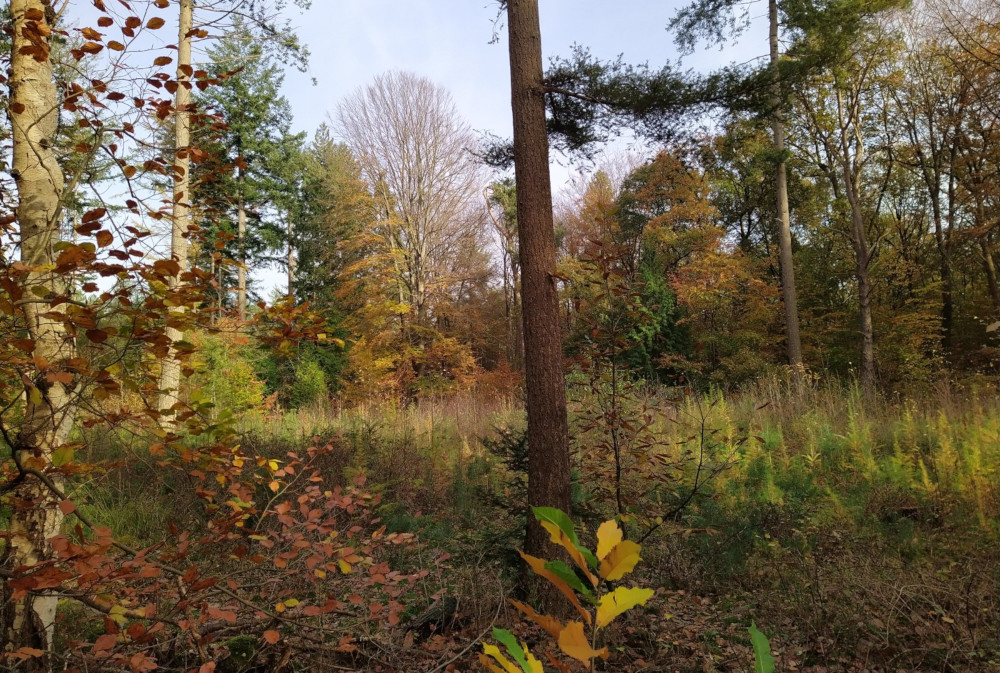The ecological aspects of clearfelling at different scales in Dutch forests

Forests play an important role in regulating the amount of greenhouse gases in the atmosphere and in preserving biodiversity. Therefore the harvesting and felling of trees, from individual trees to clearcut, raises social concerns. The Ministry of Agriculture, Nature and Food Quality has asked Prof. Frits Mohren and Dr. Jan den Ouden to conduct research into the ecological effects of clearfelling at different scales.
Dutch forests managed on a small scale
To understand the scale of harvesting in Dutch forest management, Mohren and Den Ouden analyzed more than 1,400 harvesting registrations from six provinces over the period from 2017 - 2019. Annually, an average of 0.6 percent of the total forest area was reported for cutting. The total area of large-scale clearcutting per year (defined in the Forest Strategy as > 0.5 ha) in the Netherlands is estimated at 0.1 - 0.2 percent of the entire forest area. This means that Dutch forests are largely managed on a small scale and that large-scale clearcutting takes place to a limited extent.
Microclimate
Forests have a microclimate that is regulated by the forest canopy, the top layer of the forest. When gaps in the forest canopy occur, for example due to harvesting, the regulating influence of the forest canopy diminishes as more sunlight penetrates the canopy and reaches the forest floor. This leads to physical changes in the forest climate. If more than half of the clearing area is exposed to direct sunlight for 90% of the time, this can be called large-scale clearcutting (Figure 1).
Carbon
In places where clearcutting takes place, gaps in forest canopy may lead to an acceleration of organic material decomposition in the soil. This may reduce the total carbon stock in the ecosystem. The effects on the soil carbon stock varies greatly between tree species, soils and climatic zones. Also studies show very different results. Mohren: “It is virtually impossible to indicate exactly how much organic matter will disappear from the soil after clearcutting, as this depends on many factors. We estimate the carbon loss in Dutch forests in the years after clearcutting to be about 20-25 tons C (an emission of 75-90 tons CO2 per hectare). The carbon stock largely recovers with subsequent regeneration of the forest. Overall, the total carbon stock in Dutch forests is gradually increasing.”
Biodiversity
The effects of clearfelling on biodiversity strongly depends on the local context. Species that disappear shortly after a clearcut is made, can reestablish in the long term from surrounding populations. This is different in old forests where specialized understory plants and animals occur, which may not recover for a long time to recover. Therefore, clearcutting in old forests is strongly discouraged. Otherwise, as long as clearcutting is part of a variety of management forms, and sufficient amounts of dead wood and old trees in the surrounding area are maintained, clearcutting appears to have limited effects on biodiversity. In addition, small-scale clearfelling, as in e.g. group selection, may even provide habitat for species that benefit from open spaces, such as the wryneck and nightjar.
Future of clearcutting
“Clearcutting practice is mainly a remnant of the large-scale forest development at the beginning of the last century,” say Den Ouden and Mohren. “Since the 1970s and 1980s there has been more interest in other, smaller-scale forms of forest management. Large-scale clearcutting is not in line with the current goals of forest management in the Netherland. The ambition in the Forest Strategy to set a maximum of 0.5 ha for clearcutting is a confirmation of the choice for small-scale management. Our research shows that this is in line with climate adaptation, soil protection and biodiversity targets. Soil acidification and drought also ask for restrictions in the size of clearfellings. Strictly speaking, however, there is no a compelling ecological reason to ban clearcutting altogether from Dutch forest management.”